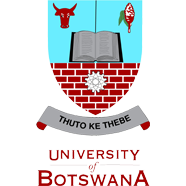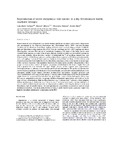Regeneration of seven indigenous tree species in a dry Afromontane forest, southern Ethiopia
Date
2010Author
Tesfaye, G.
Teketay, D.
Fetene, M.
Beck, E.
Publisher
Elsevier, www.elsevier.comType
Published ArticleMetadata
Show full item recordAbstract
Regeneration of seven indigenous tree species having significant ecological and economic importance was investigated in the Munessa-Shashemene dry Afromontane forest (MSF), southern Ethiopia. Densities and distributions of seedlings, saplings and trees were assessed along gradients of altitude, light and disturbance using quadrat sizes of 10×5 m (for seedlings) and 20×20 m (saplings and trees) following line transects. The number of individuals, frequency and height of the study species were recorded in the quadrats at every 100 m drop in altitude. Seedling densities varied markedly among the species and altitudes. Mean densities (number of individuals ha−1) of seedlings ranged from zero (Polyscias fulva) to 5334 (Prunus africana), and from three (Polyscias fulva) to 102 (Podocarpus falcatus) for trees and saplings. Canonical Correspondence Analysis revealed that seedlings of Celtis africana and Croton macrostachyus were highly favored by disturbance and, hence, were concentrated in canopy gaps within the forest. Based on their population structures, the study species could be categorized into three groups: (1) Species that showed the highest proportion of individuals in the lowest height class and with a gradual decrease towards the upper height classes, which suggests good regeneration; Podocarpus falcatus, C. africana, C. macrostachys and P. africana belonged to this group. (2) Species that showed higher proportions of individuals in the lowest height class and with missing individuals in the subsequent middle height classes, indicative of hampered regeneration; Syzygium guineense and Pouteria adolfi-friederici belonged to this group. (3) Species with no individuals in the lowest and middle height classes but represented by individuals in upper height classes; P. fulva belonged to this group. The species categorized in the last two groups exhibited hampered regeneration, and P. fulva is in the verge of local extermination. High seedling densities (e.g. C. africana and P. africana) and/or adaptive defense mechanisms to herbivory (e.g. P. falcatus and C. macrostachyus) were common attributes of species, which exhibited good regeneration. Regeneration problems were largely attributed to human disturbance, lack of suitable habitat for seed germination or problems associated to seed set (seed predation or abortion). Our study indicated that P. fulva, P. adolfi-friederici and S. guineense require the highest immediate attention for conservation in the MSF.
Collections
- Research articles (ORI) [270]

